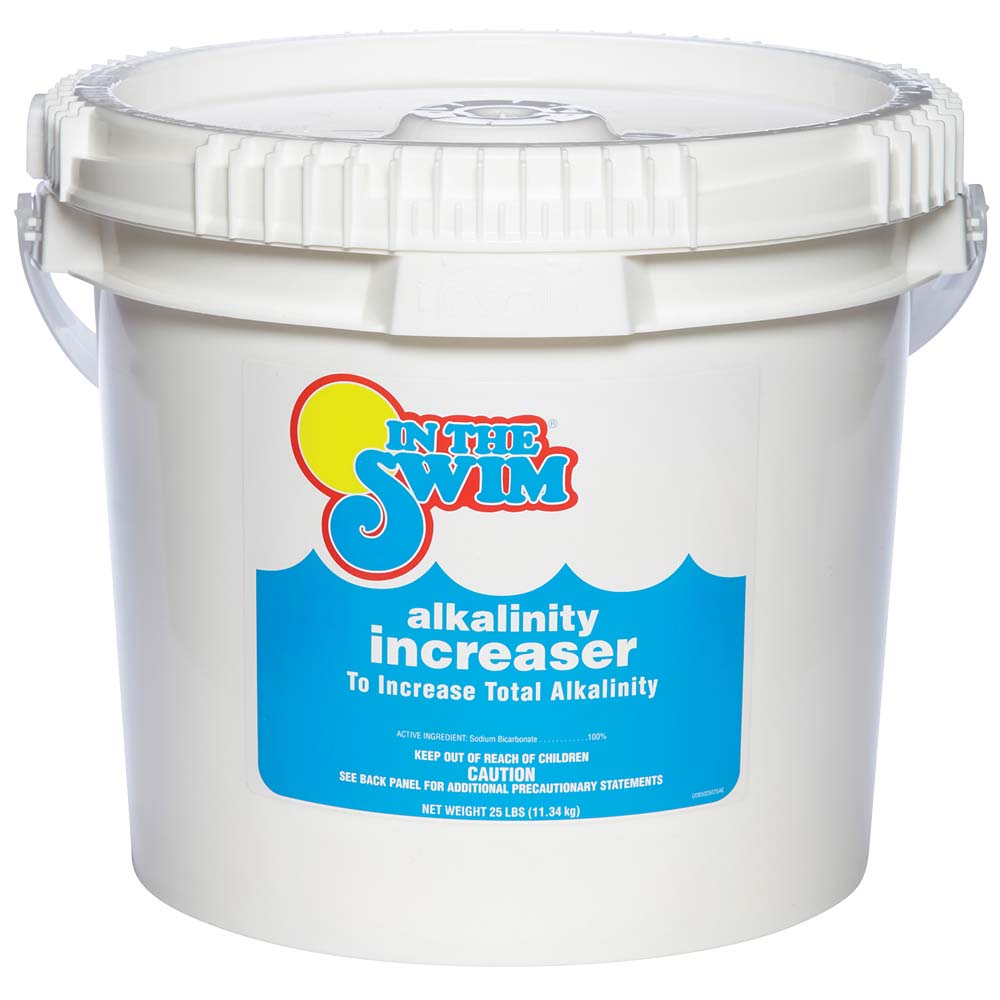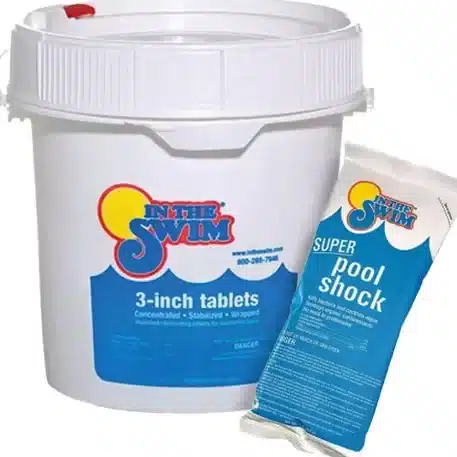FREE Standard Shipping On All Orders $100 or More!*

Water Balance for Vinyl Liner Pools
Like interconnected gears, Water Balance is the relationship between different chemical measurements of your pool water. It's an extremely important aspect of pool care. A good combination of chemical water balance as well as proper circulation and filtration, is required to keep your water clean and clear.
The Importance of Balanced Water Chemistry
Each type of pool (concrete, vinyl, fiberglass, tile) has slightly unique differences when it comes to water balance and the process of maintaining the water chemistry of the pool. Here's a look at water balance for a vinyl liner pool.
Not balancing your pool water properly? There are several drawbacks to ignoring water balance, such as the many Recreational Water Illnesses that can affect a person's health. The likelihood of breaking out in skin rashes or eye irritations is high in a poorly balanced, filtered and sanitized pool.
Improper balancing of chemicals can also affect the health of your liner as well as your other pool equipment. You can develop scaling and even stains on the liner. Balancing chemicals are not usually ones that will stain the liner, but improper water balance makes it easier for stains to form on a vinyl liner.
Balancing Total Alkalinity in a Vinyl Pool

The Total Alkalinity reading for your swimming pool should be between 80-120 ppm (parts per million). If your alkalinity is too high, you can have signs of scaling and the water will probably be very cloudy. In this case, the pH will probably be very high also. By adding pH down, or pH decreaser, you will be lowering the pH as well as the Alkalinity.
If your alkalinity is too low, you may also have a low pH condition, which is very corrosive to pool liners, and rubber seals and o-rings. As mentioned above, it is really important to balance the alkalinity first and then then adjust your pH level. Without the proper level of alkalinity, your pH will seek it's own level, and resist adjustments that you make - or "bounce" right back to where it was before adding your pH up or pH down chemical. Add alkalinity increaser if your levels are below 80 ppm.
Balancing pH in a Vinyl Pool
pH should be between the range of 7.2 - 7.6. If pH is too high, you can see scaling and calcium deposits on your pool, and perhaps algae problems. The water may also have cloudiness issues. If the pH is too low, you will have eye and skin irritations. Low pH - below 7.0, begins to become acidic, and acidic water will cause a vinyl liner to weaken. Use pH Increaser to raise pH level. It is important to remember that the Alkalinity level affects the pH level. If the pH is out of line, always check and balance the alkalinity first, then balance the pH.
Balancing Calcium Hardness in a Vinyl Pool

Calcium hardness is also very important to the chemical balancing of your vinyl liner swimming pool. Calcium for a liner pool can be a bit lower than a plaster pool, in the range of 150-250 ppm. If a vinyl liner's calcium level is too low, this soft water situation could lead to foaming and other water problems, and can harm the vinyl.
If the calcium hardness level is very high (over 400 ppm), you could begin to see signs of scaling, a white flaky crust, on the pool and equipment surfaces. Your skin could begin to feel itchy. The water, itself, will not feel silky smooth (because it is very "hard"). For calcium levels that are below 150 ppm, you will need to add some calcium increaser. If the calcium is very high, it is best to empty some of the water and refill with softer water.
Balancing Sanitizer in a Vinyl Pool

If continual, high levels of pool chlorine can dry out a liner, as it sucks out the material that makes vinyl soft and pliable. High chlorine levels also fade the colors of a pool liner, giving you what's known as a "bleached" pool liner. My recommendation for chlorine is to use less of it - by investing in a Nature2 or Frog mineral system. These units use silver and copper ions to help purify your water, and can reduce your chlorine usage by half. The money you save in chlorine will be spent on the mineral cartridges, so no immediate savings, but in the long run, your liner should last much longer.
Shocking the pool can also be hard on a vinyl liner. If you are going to use granular or powdered pool shock, make sure to mix the shock in a bucket of water before adding it to the pool. You do not want to have undissolved granules landing on the liner, it can instantly bleach out the color, or damage the vinyl. Another option is to use a non-chlorine shock, instead of chlorine shock.
Cyanuric acid is sometimes considered a component of water balance, and it is sold on our Water Balancers page. But it's not really part of water balance. Adding stabilizer to the pool, to the level of 30-50 ppm, will protect the chlorine molecules from the sun, "stabilizing" them from the effects of the sun.
Using Minerals in a Vinyl Pool
When you have a vinyl liner pool, you want to test for minerals in the water. If you have minerals in your water, especially well water, they can stain a vinyl liner pool. it is easier to try to prevent the minerals from staining the pool liner or the pool steps, than it is to remove them.
We have products like Metal Free which will lock up these metals, keeping the liner stain free. If you already have stains on your liner, we have many stain chemicals that will remove stains, and there is also a pool stain test kit that can identify the stain and tell you how to treat it.